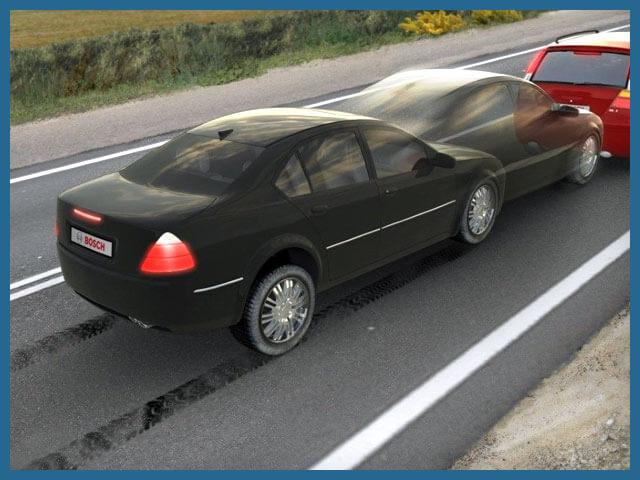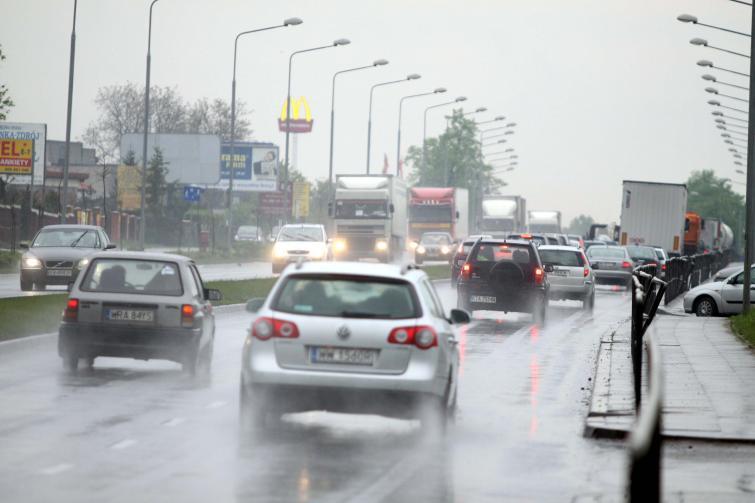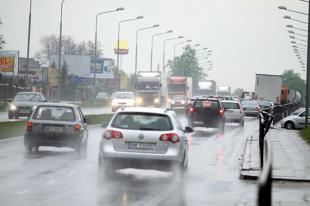
Safe distance between cars. Guide
 According to the SDA, the driver is obliged to maintain a safe distance between vehicles, necessary to prevent a collision in the event of braking or stopping the vehicle in front.
According to the SDA, the driver is obliged to maintain a safe distance between vehicles, necessary to prevent a collision in the event of braking or stopping the vehicle in front.

Polish regulations only in one case precisely define the minimum distance between vehicles moving in a convoy. This rule applies to the passage of tunnels with a length of more than 500 meters outside settlements. In this case, the driver must keep a distance from the vehicle in front of at least 50 meters if he drives a car with a total mass of not more than 3,5 tons or a bus, and 80 meters if he drives another vehicle.
In addition, the rules oblige drivers of vehicles or combinations of vehicles whose length exceeds 7 meters, or vehicles that are subject to an individual speed limit, when driving outside built-up areas on two-lane dual carriageways: to keep such a distance that overtaking vehicles could safely enter the gaps between vehicles.
In other situations, the regulations oblige to maintain a safe distance, without specifying what it should be.
Time to react
Keeping a proper distance between vehicles is one of the most important factors affecting road safety. The greater the distance between vehicles, the longer it takes to react in case of an unforeseen situation and the greater the chance of avoiding a collision. The rules oblige the driver to maintain a safe distance, that is, one that will avoid a collision. How to choose a safe distance in practice? The most important factors influencing the choice of distance between cars are speed, road conditions and reaction time. Their "sum" allows you to keep the desired distance.
The average reaction time is approximately 1 second. This is the time during which the driver must react to receiving information about the need to perform a maneuver (braking, detour). However, the reaction time can even increase by several times if the driver's attention is absorbed by, for example, lighting a cigarette, turning on the radio, or talking to passengers. An increase in reaction time is also a natural consequence of fatigue, drowsiness and bad mood.
2 seconds of space
However, one second is the minimum to which the driver must respond. In the event that the vehicle in front begins to brake sharply, we will only have time to make the same decision and start braking. However, we must remember that the car behind us will also begin to slow down only when it notices our reaction. Many newer vehicles are equipped with emergency braking systems that not only make the most of braking force, but also automatically activate hazard warning lights to alert other road users. Another system installed in some cars that helps keep the right distance is a system that informs us about the time after which we will hit the back of the car in front if we do not take any action. It is important to note that the distance between vehicles of less than 2 seconds is considered dangerous by the system. In practice, the most commonly recommended distance between vehicles is two seconds, which corresponds to about 25 meters at a speed of 50 km/h.
An important factor influencing the choice of distance between vehicles is the speed at which we are moving. It is assumed that when driving at a speed of 30 km / h, the braking distance is approximately 5 meters. With an increase in speed to 50 km / h, the braking distance increases to 14 meters. It takes almost 100 meters to stop at 60 km/h. This shows that an increase in speed should increase the distance to the vehicle in front. Some countries, such as France, have a minimum distance between vehicles. This is the converted equivalent of 2 seconds depending on the speed. At 50 km/h it is 28 m, at 90 km/h it is 50 m and at 100 km/h it is 62 m. . Violation of this provision entails a fine of 130 euros, and in case of relapse, the driver can be imprisoned for up to 73 months and deprived of a driver's license for 90 years.
Experience required
Keeping too short a distance often causes traffic accidents. A common practice on Polish roads is "bumper riding", often 1-2 meters behind the car in front. This is extremely dangerous behavior. A driver so close to another vehicle does not have the ability to react quickly in an emergency requiring immediate action. If we do not keep an appropriate distance, we also limit our field of vision and cannot see what is in front of the car in front.
Another factor that should determine the distance between vehicles is the conditions. Fog, heavy rain, snowfall, icy roads and blinding sun that reduces the visibility of the brake lights of the vehicle in front are situations in which you should increase the distance.
How can he check the distance to the vehicle in front? As soon as the car in front of us passes a road sign, tree or other fixed landmark, we must subtract "one hundred and twenty-one, one hundred and twenty-two." The calm pronunciation of these two numbers corresponds to approximately two seconds. If we don't reach the checkpoint in that time, then we're keeping a safe distance of 2 seconds. If we pass it before we say two numbers, we must increase the distance to the car in front.
Sometimes it is not possible to maintain such a large gap as we assume. Wanting to increase the distance, we create a larger gap in the column, thereby encouraging others to overtake us. Therefore, choosing the right distance requires not only knowledge, but above all experience.
Jerzy Stobecki
What do the rules say?
Article 19
2. The driver of the vehicle is obliged:
2. 3. maintain the distance necessary to avoid a collision if the vehicle in front brakes or stops.
3. Outside built-up areas on roads with two-way traffic and two lanes, the driver of a vehicle subject to an individual speed limit, or a vehicle or combination of vehicles with a length of more than 7 m, must maintain such a distance from the vehicle ahead so that other overtaking vehicles could safely enter the gap between these vehicles. This provision does not apply if the driver of the vehicle is overtaking or if overtaking is prohibited.
4. Outside built-up areas, in tunnels with a length of more than 500 m, the driver must keep a distance from the vehicle in front of at least:
4.1. 50 m - if he drives a vehicle, the maximum authorized mass of which does not exceed 3,5 tons, or a bus;
4.2. 80 m - if he drives a set of vehicles or a vehicle not specified in paragraph 4.1.
Expert Commentary
Subcommissioner Jakub Skiba from the Mazowieckie Provincial Police Office in Radom: – We must remember that the safe distance between vehicles depends on many factors. It is influenced by the speed with which we are driving, the conditions and psychomotor characteristics of the driver. When increasing the speed, we must increase the distance to the vehicle in front. Especially during the autumn-winter period, it should be remembered that at any time conditions may worsen and the road may become slippery, which should also increase the distance. On the road, you need to be imaginative and anticipate what will happen if we get too close and the vehicle in front starts to brake hard.